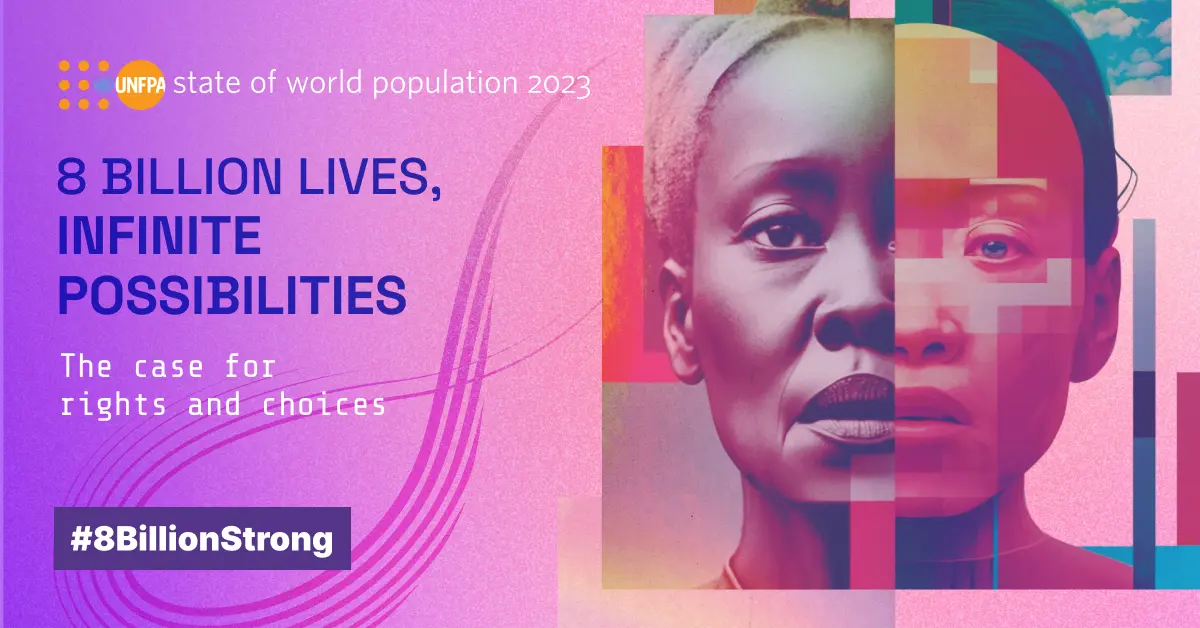UN population report: Key takeaways for India and the world
Ancient and Medieval History
Art and Culture
Modern History
Post Independence History
World History
Indian Society
Physical Geography
Indian Geography
World Geography
Indian Polity
Governance
Social Justice
International Relations
Economics and Economic Development
Science and Technology
Environment and Biodiversity
Disaster Management
Internal Security
Ethics, Integrity and Aptitude
Ethics Case Studies
Essay
Government Scheme
Daily Updates
UN population report: Key takeaways for India and the world

2023-04-19
09:13 am
674 Views
Recently, the United Nations Population Fund (UNFPA) has published its report 'State of World Population' report with a title '8 Billion Lives, Infinite Possibilities'. As per the report, India has surpassed China in population and become the most populous country in the world. The UN had previously reported in November 2022 that the global population had exceeded 8 billion.

Key Highlights of the report
- The world's population is currently 8,045 million, with 65% of people aged between 15-64 years, followed by the 10-24 years group (24%) and 10% above 65 years of age.
- Eastern and South-Eastern Asia, and Central and Southern Asia are the world's most populous regions, representing 29% and 26% of the global population, respectively, with China and India having the largest populations.
- By 2037, Central and Southern Asia is expected to become the world's most populous region.
- The population growth in South Asia is expected to decline before 2100, according to earlier UN reports. However, the latest projections suggest the global population could grow to 8.5 billion in 2030, 9.7 billion in 2050, and 10.4 billion in 2100.
- The population increase up to 2050 will be concentrated in eight countries, including India, Nigeria, and the Democratic Republic of Congo.
- Countries in sub-Saharan Africa are expected to continue growing and contribute to more than half of the global population increase anticipated through 2050.
The outlook for population growth
- While global population numbers will continue to grow for several decades, the rate of growth has fallen and has been less than 1% since 2020, largely due to declining fertility rates.
- 60% of the world's population lives in a region where the fertility rate is below replacement level, and international migration is now the driver of growth in many countries.
- South Asia has some of the highest emigration trends, with India seeing an estimated net outflow of 3.5 million and Pakistan having the highest net flow of migrants of 16.5 million between 2010 and 2021.
- Despite the declining average number of births per woman, the total annual number of births has remained stable at around 140 million since the late 1980s due to the youthful age distribution of the global population.
- In 2021, 134 million babies were born worldwide, with the majority of births occurring in Asia and sub-Saharan Africa. The number of new-borns is expected to slightly increase to reach 138 million annually between 2040 and 2045, despite the continuous decline in the average number of births per woman.
Contribution of life expectancy to the global population growth
- The increasing life expectancy has contributed to global population growth, as fertility rates have been dropping in various parts of the world, while mortality rates have been decreasing due to better access to healthcare and improving standards of living.
- According to the 2023 report, life expectancy among men and women stands at 71 and 76 years, respectively.
- The UN reported that life expectancy globally reached 72.8 years in 2019, which is almost 9 years more than 1990.
- Further reductions in mortality are projected to result in an average longevity of around 77.2 years globally in 2050.
- The share of the global population aged 65 years or above is projected to rise from 10% in 2022 to 16% in 2050.
- By 2050, the number of persons aged 65 years and above is expected to be more than double that of 5-year olds and the same as 12-year olds, according to the UN.
- The global population will start to decline once fertility rates drop in high fertility regions like sub-Saharan Africa.
The Population Picture of India: Current Status and Future Trends
- India is currently the most populous country in the world, with a population of 142.86 crores people.
- 68% of India's population belongs to the 15-64 years category, and 26% in the 10-24 years group, making India one of the youngest countries in the world.
- India's fertility rate has been declining steadily, with the National Family Health 5 Survey reporting a total fertility rate of 2.0 for the first time, falling from 2.2 in NFHS 4 (2015-16).
- India's large population is a result of "population momentum" from earlier decades, and experts predict that the country's population is likely to start declining around 2050.
- Factors contributing to the slowing growth rate of India's population include increased use of contraceptive methods, spacing of pregnancies, access to healthcare, and impetus to family planning, wealth, and education.
- India's growth rate has dropped from 2.3% in 1972 to less than 1% now, and the number of children each Indian woman has during her lifetime has come down from about 5.4 to less than 2.1 now, indicating the usage of modern contraceptives is rising across the country.
- The life expectancy of men in India is 71 years, while for women, it is marginally lower at 74 years, which is the same as the global life expectancy.
Assessing the Implications of India's Large Population: Boon or Bane?
- India's large population is an opportunity for a "demographic dividend".
- With 68% of India's population being youth and working-age, India could have one of the largest workforces in the world.
- Japan and South Korea have declining populations accompanied by an aging population and a lack of workforce.
- India needs to capitalize on its demographic dividend by educating and skilling its youth to spur its economic growth further.
- India can provide skilled labour to countries that will be in dire need of such a workforce in the near future.
















Comments
Login To Comment
Recent Comments